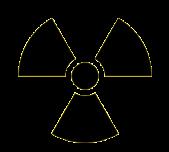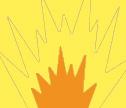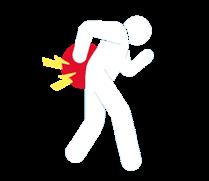Housing Health and Safety Rating System
As referred to in the most recent copy of ‘At the Heart’, the Housing Health and Safety Rating System (HHSRS) was introduced by the government as a way of deciding whether the housing conditions of residential premises are satisfactory. It looks at whether premises have any defects that may give rise to hazard, which in turn could cause harm to the occupiers, or any visitors.
The HHSRS assesses 29 housing hazards and the effects that each may have on the health and safety of the current or future occupant or any visitor to the property. It applies to all residential properties irrespective of whether they are occupied by a homeowner or a tenant. It is not possible to completely remove all risk of harm from within a property, but the system provides a way that hazards can be assessed and to decide on what is the best way of dealing with them.
We think our homes are well maintained and meet the decent homes standard. Should you have any concerns, please contact us on 01708 432824.
Physiological Requirements
Too cold
Threats to health from sub-optimal indoor temperatures. Healthy indoor temperature is approximately 21º C.
Health effects: respiratory (flu, pneumonia and bronchitis); cardiovascular conditions (heart attacks and strokes); thermoregulatory system impairment (body’s temperature control), etc.
For more information www.havering.gov.uk/news/article/1222/energy_doctors_to_help_havering_ households
Too Hot
Threats due to excessively high indoor air temperatures.
Health effects: dehydration; trauma; stroke; cardiovascular, respiratory and genitourinary disorders.
Asbestos (and MMF)
Presence of, and exposure to, asbestos fibres and MMF within dwellings.
Health effects: pleural disease; lung cancer; mesothelioma NOTE: Attempting to remove asbestos which is in good condition and not likely to be disturbed is significantly more hazardous than not removing it. Work on asbestos should be done by a contractor licensed by the Health and Safety Executive.
For more information www.havering.gov.uk/environmental-issues/hazards-pollution-flooding
Damp and mould growth
Health threats due to dust mites, mould or fungal growths, including mental and social well-being health threats associated with damp, humid, mouldy conditions.
Health effects: allergies; asthma; effects of toxins from moulds; fungal infections.
For more information www.havering.gov.uk/downloads/file/4386/damp_and_mould_advice_leaflet
Physiological Requirements Protection Against Infection
Biocides
Threats to health from chemicals used to treat timber and mould growth. Health effects: risk from inhalation; skin contact; ingestion (eating or drinking the chemical).
Carbon monoxide and fuel combustion products
Hazards due to the presence of excess levels in the atmosphere of carbon monoxide, nitrogen dioxide or sulphur dioxide and smoke within the dwelling.
Health effects: Dizziness; nausea; headaches; disorientation; unconsciousness; respiratory disorders; bronchitis and breathlessness.
Lead
Health threat from lead ingestion. Lead sources: paint, water pipes, soil, fumes from leaded petrol.
Health effects: lead poisoning; nervous disorders; mental health; blood production issues; behavioural problems in children.
Radiation
Health threats from radon gas and its by products, primarily airborne, but also radon dissolved in water; Concern expressed about possible health effects of electromagnetic fields (EMFs); Leakage from microwave ovens (rare).
Health effects: lung cancer caused by exposure to radon gas. Risk increases with dose and duration of exposure.
Uncombusted fuel gas
Threat from fuel gas escaped into the atmosphere within the dwelling.
Health effects: suffocation
Volatile organic compounds
Diverse group of organic chemicals, including formaldehyde, that are gaseous at room temperature and found in a wide variety of materials in the home.
Health effects: allergies; irritation to eyes, nose, skin and respiratory tract; headaches; nausea; dizziness and drowsiness.
Psychological Requirements
Crowding and space
Hazards associated with lack of space for living, sleeping and normal household/ family life.
Health effects: psychological distress and mental disorders; increase hygiene risk and risk of accidents; personal space and privacy needs compromised.
Entry by intruders
Difficulties in keeping a dwelling secure against unauthorised entry and the maintenance of defensible space.
Health effects: fear of burglary occurring; stress and anguish caused by burglary; injuries caused by intruder.
Lighting
Threats to physical and mental health associated with inadequate natural/ artificial light, including psychological effects associated with the view from the dwelling through glazing. Health effects: depression and psychological effects due to lack of natural light, eyestrain from glare and inadequate light.
Domestic hygiene, pests and refuse
Poor design, layout and construction, such that the dwelling cannot be readily kept clean and hygienic; access into, and harbourage within the dwelling for pests; inadequate and unhygienic provision for storing and disposal of household waste.
Health effects: stomach and intestinal disease; infection; asthma; allergies; food spoilage; disease from rats and birds;
Food safety
Threats of infection from poor provision and facilities for storage, preparation and cooking of food.
Health effects: stomach and intestinal disease; diarrhoea; vomiting; stomach upsets; dehydration.
Personal hygiene, sanitation and drainage
Threats of infection and threats to mental health associated with personal hygiene, including personal and clothes washing facilities, sanitation and drainage.
Health effects: stomach and intestinal disease, including dysentery; skin infections; depression.
Water supply
The quality and adequacy of the water supply within the dwellings for drinking and domestic purposes, including threats to health from contamination by bacteria, protozoa, parasites, viruses and chemical pollutants.
Health effects: dehydration; fatigue; headaches; dry skin; bladder infections; stomach and intestinal and respiratory disorders; Legionnaires’ disease.
Protection Against Accidents
Falls associated with baths etc.
Falls associated with a bath, shower or similar facility.
Health effects: Physical injuries; cuts; lacerations; swelling; bruising.
Falling on level surfaces etc.
Falls on any level surface such as floors, yards and paths, including falls associated with trip steps, thresholds or ramps where the change in level is less than 300mm.
Health effects: physical injury; bruising; fractures; head, brain and spinal injuries.
Falling on stairs etc.
Falls associated with stairs, steps and ramps where the change in level is greater than 300mm. It includes falls associated with internal stairs or ramps within the dwelling; external steps or ramps within the curtilage of the dwelling. It includes falls over balustrading associated with stairs, steps or ramps.
Health effects: physical injury; bruising; fractures; head, brain and spinal injuries.
Noise
Threats to physical and mental health due to exposure to noise inside the dwelling or within its curtilage.
Health effects: psychological and physiological changes resulting from sleep disturbance; poor concentration; headaches and anxiety.
For more information www.havering.gov.uk/community-1/anti-social-behaviour-community
Falling between levels
Falls from one level to another, inside or outside a dwelling, where the difference in levels is more than 300mm. e.g. falls from balconies, landings, out of windows, over garden retaining walls etc.
Health effects: physical injuries.
For more information www.havering.gov.uk/council-tenants/resident-safety
Protection Against Accidents
Electrical hazards
Hazards from shock and burns resulting from exposure to electricity, including from lightning strikes.
Health effects: shock
Fire
Threats from exposure to uncontrolled fire associated smoke at a dwelling. It includes injuries from clothing catching alight, which appears to be common when people attempt to extinguish such a fire.
Health effects: burns, being overcome by smoke or gas, death.
Flames, hot surfaces etc.
Threats of burns – injuries caused by contact with a hot flame or fire, with hot objects or hot non-water based liquids; scalds – injuries caused by contact with hot liquids and vapours. Includes burns caused by clothing catching alight.
Health effects: burns; scalds; permanent scarring; death.
Collision and entrapment
Risks of injury from trapping body parts in architectural features, e.g. trapping fingers in doors; and colliding with objects such as architectural glazing, windows, doors, low ceilings, walls. Health effects: injuries through collision or entrapment involving doors and windows, e.g. cuts from glass, shutting door on part of body.
Explosions
Threat from the blast of an explosion, from debris generated by the blast and from the partial or total collapse of a building as the result of an explosion.
Health effects: while the likelihood of an explosion is small, injuries can include: physical injuries, crushing; bruising; puncture; fractures; head, brain and spinal injuries, scalding if involves hot water.
Position and operability of amenities etc.
Threats of physical strain associated with functional space and other features at dwellings. Health effects: strain and sprain injuries.
Structural collapse and falling elements
Threat of dwelling collapse or of a part of the fabric being displaced or falling due to inadequate fixing, disrepair or the result of adverse weather conditions.
Health effects: physical injuries. For more information www.havering.gov.uk/council-tenants/resident-safety/2






























